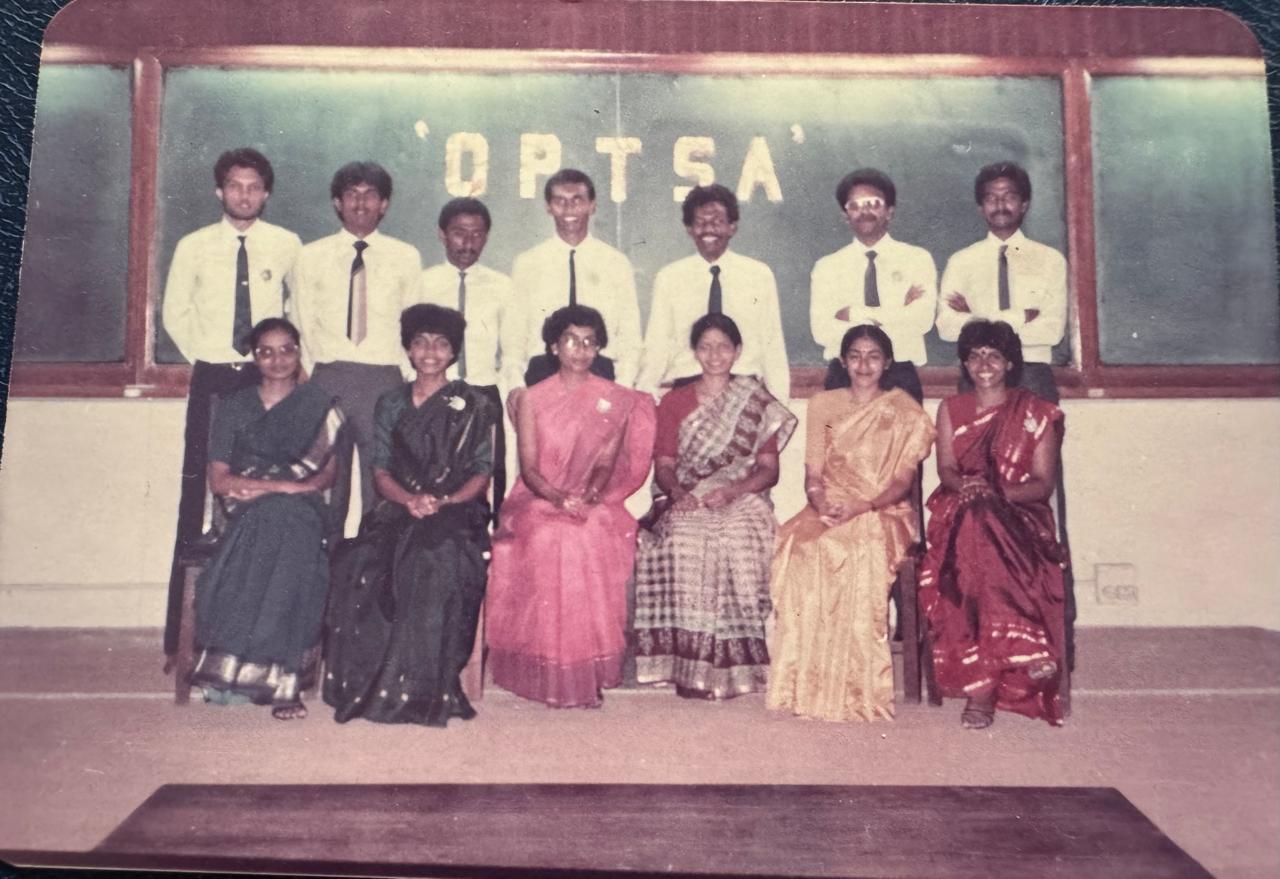The Birth of OPTSA A Chronicle of Persistence and Progress

1st Governing Body - OPTSA
Standing – Ashley Smith, Alexander Ring, Thomas Mathew, Leonard Boris Roxon , Rabindran Isaac, Biji T Jose, PJ Thomas
Sitting – Mukteshwari Bosco, Premu Elizabeth John, Lisa Mariam George, Shobha George (Head, OT Education), Veena Nayak, Christine Savithri Paulraj
The story of the Occupational-Physiotherapy Students’ Association (OPTSA) begins in 1962 at the Christian Medical College and Hospital (CMC), Vellore, Tamil Nadu. With India’s rehabilitation services expanding rapidly, there emerged an urgent need for qualified professionals in Physiotherapy and Occupational Therapy. Responding to this call, CMC, under the aegis of the Christian Medical Association of India (CMAI), launched its first certificate courses in both fields.
By the late 1970s, the value of these courses was increasingly recognised. In less than twenty years, the Physiotherapy program had transitioned to a diploma under Madras University, reflecting its growing academic rigor.
A landmark occurred in 1982, two decades after the initial courses began: CMC introduced bachelor’s degree programs in both Physiotherapy and Occupational Therapy. This was a moment of palpable excitement for students and faculty alike, as for the first time, non-medical courses were integrated into the extraordinary academic and student life at CMC. Pioneers like Mr. Kerry Frey (Head of Physiotherapy Education), Ms. Jean Bald, and Ms. Monica Hopkins (Occupational Therapy Clinical Head) were instrumental in bringing these courses to life through their unwavering commitment to excellence.
Alongside these developments, students entering in the 1982 batch found new doors opening — being welcomed into Student Houses and invited to participate fully in extracurricular and student union activities traditionally reserved for medical students. This marked a significant step toward inclusivity on campus.
By 1985, the first group of students to complete the bachelor’s programs was set to graduate. Dr. Benjamin Pulimood (Principal, CMC), together with Mr. Kerry Frey, Ms. Monica Hopkins, and Ms. Shanthi Mary Matthew (Head of Occupational Therapy Education), initiated discussions about a combined graduation ceremony for OT, PT, and medical graduates. The students of the 1982 and 1983 batches, supported enthusiastically by their Heads of Departments, tirelessly advocated for this integration by meeting with the Principal, student bodies, and the heads of various departments.
However, these discussions soon met opposition from the Medical Student Body, which was hesitant to include Physiotherapy and Occupational Therapy graduates in their longstanding graduation ceremony. After much debate, the administration ultimately sided with tradition, and the proposal for a joint graduation was rejected.
Rather than succumb to disappointment, the OT and PT students resolved to claim their own space on campus. With renewed purpose, the graduating students from 1982, those in the batches of 1983 and 1984, and a wave of support from the incoming 1985 batch, collaborated — guided by the mentorship of their faculty leaders — to establish a new student community. So, in 1985, the Occupational-Physiotherapy Students’ Association (OPTSA) was born, providing an official platform for solidarity, advocacy, and celebration.
This milestone was commemorated by a moving Lamp Lighting ceremony, where the administration presented each intern with a pin. Here, a lasting tradition was established: the passing of the lit lamp from final-year students to graduating interns, symbolizing the enduring commitment of OPTSA members to carry light, wherever they would serve.
The association’s first formal committee included representatives from the 1983, 1984, and 1985 student batches, ensuring a spirit of collaboration and continuity. Thanks to the foundational efforts of Dr. Pulimood, Mr. Frey, Ms. Hopkins, and Ms. Matthew, OPTSA grew into a vital part of student life at CMC.
Today, that original Lamp Lighting ceremony continues, reminding each new generation of OPTSA members of the resilience, unity, and vision that brought the association into being.